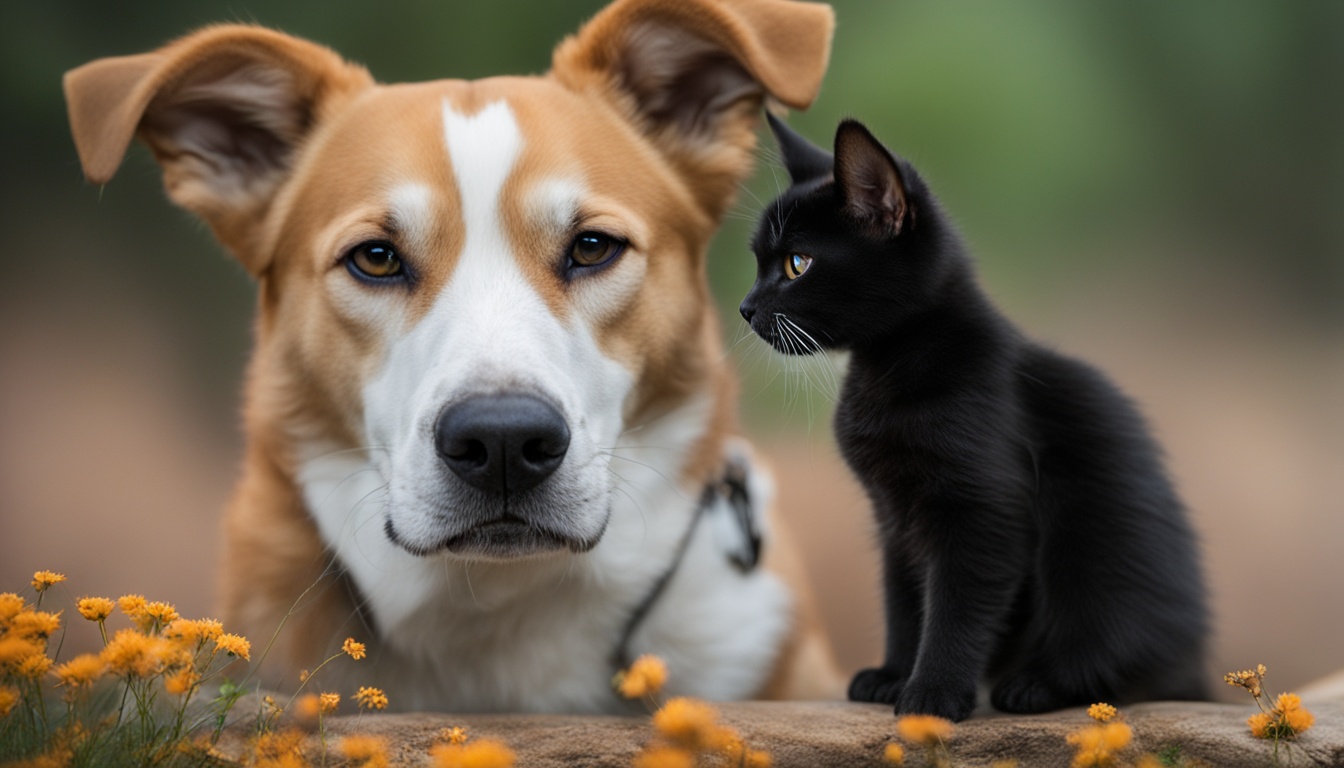Decode Pet Signals: Understanding Dog and Cat Body Language

Understanding pets goes beyond just love and care. It’s about knowing their non-verbal cues, too. Humans have studied each other’s body language for ages. Now, we’re learning to read our pets’ signals.
Lee Niel studies animal behavior, focusing on dogs. He looks for signs of fear and aggression. By knowing these signs, we can make our pets’ lives better. Yet, many pet owners find it hard to spot these fear signals. This shows we need to learn more about our furry friends.
Key Takeaways:
- Knowing dog and cat body language helps us create a safe home for them.
- Spotting fear in pets can stop aggression and reduce stress for everyone.
- We need to educate ourselves more to understand our pets better.
- Bonding with our pets means noticing and reacting to their silent messages.
- If you’re worried about your pet’s behavior, talk to a vet or an animal expert.
Understanding Dog Body Language
Dogs have their own ways of reacting to different situations, just like people do. Knowing how to read dog body language is key. It helps spot signs of fear or aggression. By understanding their behavior, we can talk to our dogs better and keep them happy.
A dog’s body posture tells us a lot. If they stand stiff and their hair stands up, they might be scared or aggressive. But if they are relaxed and their body is loose, it means they are calm and friendly.
The ears and tail also give us clues. Ears up and a gently wagging tail mean a dog is friendly and happy. But if their tail is between their legs and ears are flat, they are likely scared or anxious.
We also need to notice the small signs. Dogs licking their lips, yawning, or not making eye contact show stress or fear. These little signals are often missed, which can lead to misunderstandings.
“Understanding our dogs’ body language helps us make them feel safe and happy.”
A study by Lee Niel showed that not everyone can spot when a dog is scared or aggressive. More than 25% of people in the study couldn’t tell when a dog was acting threatening but didn’t bite. This shows we need to learn more about dog body language for the sake of dogs and people.
Recognizing Fear and Aggression in Dogs:
- Stiff or rigid body posture
- Raised hackles
- Tucked tail
- Flattened ears
- Lip licking
- Yawning
- Avoiding eye contact
| Behaviors | Signs of Fear or Aggression |
|---|---|
| Body posture | Stiff or rigid |
| Ears | Flat against the head |
| Tail | Tucked |
| Facial expressions | Tense or wrinkled |
| Eye contact | Avoiding or intense staring |
Knowing dog body language lets us make a positive space for them. Recognizing signs of fear and aggression means we can help them. We can also get expert help if needed. Understanding our dogs builds a stronger bond, leading to a happy life together.
Understanding Cat Body Language
Cats have their own secret signals that tell us how they feel. Learning these signs is key to talking better with our cat friends.
Look at a cat’s tail to see its mood. A high, softly curved tail means the cat is happy. But a low, bushy tail shows they’re scared or mad.
Cat ears also tell us a lot. Ears up and forward mean a cat is curious and ready to play. Ears back or flat show they’re worried or upset.
Cats act in certain ways when they’re scared. Hissing and growling mean they feel threatened. It’s best to give them space and not make things worse.
Getting these signals helps make a peaceful place for our cats. It’s our job to see what they’re saying and help them feel safe.

By paying attention to our cats, we build a closer relationship. A stress-less home is key to their happiness and health.
Conclusion
Understanding pet body language is key to a strong bond with them. By noticing their non-verbal signals, I learn about their feelings and needs. This helps me make a supportive space for them, reducing their stress and fear.
Learning about my pet’s body language is an ongoing journey. It strengthens our connection. Paying close attention to their behaviors helps me grasp their moods and likes. I’ve found that tail wags don’t always mean they’re happy; they could be nervous or anxious too.
Similarly, a purring cat might not be showing they’re happy. They could be in discomfort or distress instead. To deepen my bond and keep our relationship strong, I’ll keep learning about their body language. Also, I’ll talk to experts if I have concerns.
By understanding my pet better and providing a caring environment, I ensure their happiness. This solidifies our relationship for the future.
FAQ
Why is understanding pet body language important?
How can I recognize fear and aggression in dogs?
What are some of the body language cues that cats display?
How can I nurture a healthy pet-owner relationship through understanding body language?
Source Links
- https://pettrust.uoguelph.ca/news/decoding-your-pet’s-body-language
- https://be.chewy.com/decoding-dogs-body-language/
- https://www.aaha.org/your-pet/pet-owner-education/ask-aaha/pet-talk-how-to-read-your-pets-body-language/




